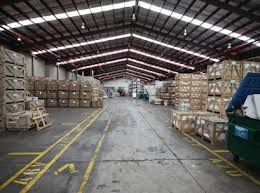
With a rising pattern towards comfort food varieties, the frozen market became 21% in 2020, and practically frozen food variety items have been encountering twofold digit deal development. Most frozen food organizations need to zero in on the soul of their association, their item. Surrendering satisfaction to the frozen satisfaction specialists guarantees your item and brand are in the ideal hands.
Frozen satisfaction is perplexing and requires specific work, warehousing, and transportation. For a frozen item to be true to form in a client’s area, you want a satisfaction master with many years of frozen insight.
Putting away and delivering frozen items is extraordinary and requires unique ability from the suitable temperature-controlled regions to the specific measure of cooling materials given the time and the proper dope transportation to guarantee the production network stays in one piece.
Cold storage warehousing includes putting away short-lived, or other delicate products like food, prescriptions, and work of art at a particular temperature reach to keep up with their honesty, period of usability, and quality.
WHO NEEDS Cold storage?
Any item or thing that can corrupt effectively or lose its trustworthiness when exposed to temperature vacillations needs chilly capacity. Boxes of products are put away in a refrigerated space. Cold storage is expected for any item or thing that can lose its respectability in encompassing temperatures. Chilling or freezing these touchy merchandise eases back their physical and substance changes, which saves their virtue while repressing natural rot.
A definitive objective of cold storage warehousing is to permit the development of these items to end-clients while keeping up with the greatest.
WHY IS COLD storage Turning out to be SO popular?
The cold storage market is supposed to extend at a build development rate (CAGR) pace of 9.2% between 2022 and 2030. However, what’s causing the expansion in notoriety? The following are three key variables:
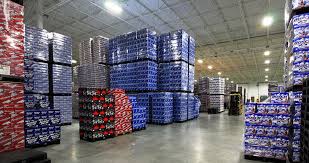
1. Changing Buyer preference
Many buyers’ dietary patterns are evolving. For example, more people are avoiding handled, canned, and bundled food sources and, on second thought, eating newly pre-arranged kitted dinners. Pre-bundled food sources in a refrigerated supermarket showcase
More customers are purchasing kitted dinners, driving up interest in cold storage. Also, these pre-arranged dinners require cautious temperature control for protection, consequently the requirement for more chilly stockpiling.
2. Growth of a population
By 2026, projections show that 20 million additional individuals will be living in the U.S. Furthermore, more individuals implies more mouths to take care of, more medication to supply, and more products requested. Subsequently, there’s more requirement for cold storerooms to oblige these requests.
3. Spending can be increased
There’s been a general expansion in customer spending due, to some degree, to the ascent of Online business. An individual is holding a Visa while composing on their P.C.
The ascent of Web-based businesses has prompted more web-based customers who purchase things that require cold storage. This remembers spending for refrigerated items like food, drugs, and beauty care products. The greater the amount of these things sold, the more noteworthy the requirement for cold storage.
How do cold storage warehouses work?
Cold storage warehouses maintain cooler temperatures through protection and central air cooling frameworks. Security fills a similar need for cold storage warehouses as it accomplishes for houses: It helps limit the exchange of intensity between the inside and outside. Then again, cold storage systems for cold storage warehouses are a touch more perplexing. In any case, the fundamental thought is that they utilize a blend of coolant, lines, radiators, and fans to retain and eliminate heat and supplant it with cooler air. You can watch the accompanying video or the segments underneath to peruse more about how an essential cold stockpiling distribution center cold storage works:
cooling components of cold storage
A cold storage warehouse cooling system’s coolant typically looks like blood. It is also called a “refrigerator” because it’s made of fluid and courses all through the framework using a progression of cylinders, lines, and parts – similar to blood through veins, conduits, and organs.
1. compressor
This is the primary part of a cold room cooling system. Assuming the coolant is the “blood,” the compressor is like the “heart” in that it helps move the coolant. It raises the coolant strain and temperature through pressure and then siphons the warmed refrigerant into the condenser.
2. Loops on a cooling condenser
The condenser eliminates heat from the coolant and scatters the intensity into the air. Simultaneously, the refrigerant changes from a gas to a fluid and then streams into the collector.
3. receiver
It stores the high-pressure liquid coolant condensate it gets from the condenser. Through this, the receiver permits the entire system to keep up with strain while giving a cradle to take care of expanded loads, for example, when more cool air is required. At the point when needed, the collector delivers the refrigerant into a development valve. The development valve manages the strain, temperature, and measure of refrigerant provided into the following part – the separator.
4. THE SEPARATOR
The separator gets and aggregates refrigerant from the recipient. Pumps outside the partition manoeuvre the refrigerant into another development valve, where the stream rate is changed before it enters the evaporator. Pumps associated with channelling in modern office pumps outside the separator flow the coolant around the framework, representing spikes in cooling interest. The pumps additionally assist with changing the heap put on the evaporator, not set in stone by the cooling needs in the distribution centre.
5. THE EVAPORATOR
The evaporator carries cold air into the cooled space and decreases the temperature. It does this by passing the chilly refrigerant through a progression of cylinders while a fan blows air from the area across the cylinders. A 2D delineation of the refrigeration/cooling process
How the entire cooling process functions inside a chilly stockpiling cooling framework. The cool refrigerant in the cylinders assimilates the intensity, and the air leaves the evaporator cold, cooling the room and the products. When the coolant does its cooling position in the evaporator, the refrigerant advances back to the primary part (the blower), and the entire cooling process begins.
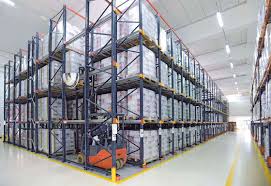
HOW COLD IS A CHILLED warehouse?
Cold storage warehouse temperatures are wide yet typically range from – 30° to 70° F. Distribution centers that handle frozen products can be as challenging as – 122.8° F. However, the most widely recognized, more excellent temperature range is between – 10 and – 20° F.
How many types of cold storage warehouses?
There are two primary sorts of cold stockpiling:
- Refrigerated cold storage
- Frozen cold storage
Refrigerated cold storage spaces (now and again called “refrigerated distribution centres”) are intended for safeguarding the honesty and period of usability of items that needn’t bother with being frozen.
Frozen cold storage warehouses protect the honesty and security of things that should freeze. A cooler extra space contained palletized meat items. More excellent cold stockpiling holds items at temperatures up to 32° F. Temperatures in these cooler storerooms can ultimately depend on 32° F, making them ideal for putting away things like meat, fish, and produce.
Five examples of cold storage warehouse
Even though there are two primary sorts of cold storage warehouses, there’s still a ton of variety among them. So we should go more than a couple of regular complex stockpiling stockroom models.
1. private cold storage warehouses
The main attribute of private cold storage warehouses is that they’re claimed by the very endeavor that purposes or delivers the products put away in the office. An excellent extra space contains trucks and racks with hanging meat items. Private cold storage is where the proprietor of the spare room additionally delivers the merchandise put away there. They’re generally seen as associated with the principal fabricating office and get the fair made using transport. The items are held in the excellent storage space until they’re fit to be shipped off to retailers or straightforwardly to the end clients. Confidential ones are more uncommon than a wide range of cold storage warehouses. This is to a great extent because of the costly idea of building and running them, which includes complex plans and designing and consistence with numerous guidelines. Subsequently, they’re saved for enormous organizations like Settle and Kraft.
While more costly, the principal advantage of claiming a private cold storage warehouse is the more central control and adaptability it gives over items and how they’re dealt with. This can assist makers with keeping up with quality, tracking down regions to decrease costs, and further developing consumer loyalty by guaranteeing an unrivaled item.
2. Public Cold Storage warehouses
Public cold storage is a chilly stockpiling distribution center typically claimed and worked by outsider-coordinated operations (3PL) organizations. Unlike private cold storage warehouses, public ones get the store and boat merchandise for client organizations. For instance, a new bloom merchant could pay a 3PL cold storage to accept their items, hold them away until orders are gotten, and then, at that point, load them onto conveyance trucks. New blossoms are stored in a little refrigerated extra space. Public cold storage spaces are controlled by outsiders and have client items in return for a charge.
Notwithstanding virtual warehousing, numerous public cold storage offers an assortment of significant worth-added administrations. This can incorporate collecting or kitting, setting embeds in bundles, or giving extended quality control. Public cold storage is the most widely recognized storage warehouse in the U.S. The justification for its prevalence is that possessing and running cold storage is gigantic, costly, and complex. Besides, dealing with planned operations is an area of weakness for the organization. Consequently, those that perceive this likewise understand the benefit of collaborating with a coordinated factors expert whose solid suit it is. Each organization can zero in on other additional squeezing concerns like item advancement, promotion, and deals.
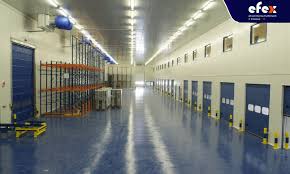
3. Refrigerated containers
A refrigerated holder is the most essential and modest cold stockpiling choice for putting away small amounts of temperature-touchy items. They are delivery holders outfitted with diesel-electric or lattice electric cooling units that can keep up with temperatures between – 30° and 70° F. Refrigerated capacity compartments outside. Refrigerated holders are the least difficult, most adaptable kind of cold storage. Additionally, exceptionally flexible, refrigerated boxes can be furnished with highlights like different floor types, indoor lighting, and distant temperature checking. Moreover, they are profoundly portable because of their small size (most are in the range of 10 and 40 feet in length). For instance, they can be set inside a distribution center, outside, or at dock level, as well as on a trailer body – anything that arrangement is expected to oblige the client’s particular requirements.
4. Blast freezer
Additionally called “blast chillers,” “shock coolers,” or “glimmer coolers,” these are freezing coolers used to quickly chill items before setting them in a longer-term capacity. A transparent outline showing a blast freezer’s warm/cool wind current is utilized to rapidly relax products before moving into longer-term cold accommodation. Blast freezers are frequently used at the transitional stage between creation and capacity. For instance, they’re helpful when someone should rapidly chill warm merchandise like bread shop things from a creation line stove before moving to a more extended-term cold storage.
How can it function?
Blower fans are utilized to compel chilled air over items, which can bring about bringing the temperature down from 160° to 41° F in around an hour and a half. These assists protect the properties by enjoying supplements, surface, flavor, and timeframe of realistic usability while likewise decreasing bacterial development. In addition, it diminishes the stress on traditional cold stockpiling cooling frameworks, which are less proficient while attempting to reduce the temperature of hot products.
5. Cold storage ultra-low temperature
Ultra-low temperature (ULT) cold capacity is intended to put away delicate organic and examination examples at temperatures ranging from – 4° to – 122.8° F. Coronavirus immunization vials are put away in a cool stockpiling holder. Ultra-low-temperature cold capacity is frequently utilized for prescriptions and drugs like immunizations. ULTs acquired openness during the Coronavirus pandemic as they realized they were expected to put away the antibodies securely. Other than antibodies, they are utilized for putting away things like meds and blood and tissue tests. Contrasted with different kinds of cold storage on this rundown, super low-temperature hard capacity represents a much more modest piece of cold storage.
Moreover, ULTs will generally be more modest indeed than customary cold storage, typically 20,000 to 60,000 square feet versus 150,000 to 400,000 square feet for the last option. They likewise have the most incredible accuracy capability to protect profoundly delicate materials. That incorporates utilizing fluid nitrogen or carbon dioxide reinforcement cooling frameworks assuming the essential cooling framework fizzles. Moreover, numerous ULT offices are outfitted with robust observing frameworks like cautions, information logging, and far-off temperature control to defend against framework disappointments.
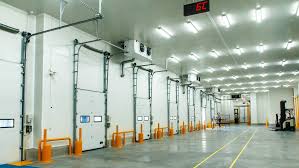
How to choose a cold storage warehouse?
There are more than 600 cold storage warehouses in the U.S. to browse. This makes it trying to conclude which is best for you. Thus, we should examine the most significant variables in picking an excellent stockpiling distribution center.
What Is the distance between Your Creation and Client Bases?
The area is essential when picking cold storage. That implies you should consider the distribution center’s vicinity to your creation regions and end-client base—a computerized map showing the course between the beginning stage and the objective. The ideal cold storeroom is near your creation offices and client bases. Preferably, the best cold storage is near the creation site and reachable for the drop-off or appropriation focuses. This makes less and more limited temperature deviations and decreases fuel utilization and carbon impressions.
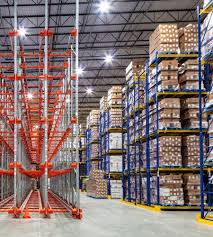
Does It Have Simple access to roads, Railways, and Airports?
As such, how close is the storage to the methods of transportation you use to move your items? Pick a cold storage space with speedy and straightforward admittance to your favored transportation modes. Most chilly products are continued on refrigerated heavy transports (dope trailers), implying the stockroom ought to be near significant interstates. Be that as it may, the stockroom should be near those transportation offices if you move your merchandise using rail lines or air. Ideally, there will be a brief distance between the two to diminish delays, fuel utilization, and other related costs.
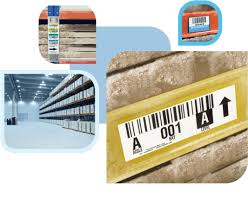
What Is the storage capacity limit?
Numerous excellent products have strict timetables and can’t support postponement or transportation. So you’ll need to guarantee that your picked cold storeroom can handle approaching merchandise. That, at last, means they can adapt despite increases in shopper interest, occasional creation, and occasion crunches.
Do They Have reliable Energy Sources?
Cold storage spaces rely on power since it’s effectively available, clean, genuinely prudent, and harmless to the ecosystem. Yet, power can be untrustworthy. Blustery skies with a power shaft broken and looming over. Power can be temperamental – your picked cold-capacity stockroom ought to have reinforcement power frameworks to manage blackouts. What’s more, on account of a blackout, it can mean major monetary misfortunes – especially for cold storerooms where items are responsible for ruining. So before you choose an office, request what kind of temperature control frameworks they have set up. Likewise, check whether reinforcement power frameworks are set up if the electrical lattice goes down.
